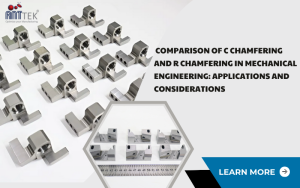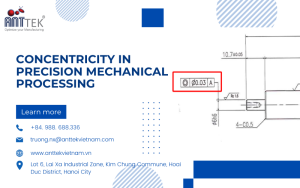Surface position deviations in precision mechanical machining
Precision mechanical machining is a critical process in manufacturing industries, where accuracy and precision play a pivotal role in the quality of the final product. Achieving precise surface features is paramount for components used in aerospace, automotive, medical, and other high-tech applications. Surface position deviations, or errors, can significantly impact the functionality and reliability of machined parts. This article delves into the concept of surface position deviations in precision mechanical machining, exploring their causes, effects, and strategies for mitigation.
What are surface position deviations?
Surface position deviations refer to the variation in the location of a machined surface from its intended position. These deviations can occur in various dimensions, such as linear, angular, or radial, and are typically measured in micrometers or even nanometers. The precision required in machining processes often demands adherence to tight tolerances, making surface position deviations a critical parameter to monitor and control.
Types of surface position deviations
Surface position deviations in precision mechanical machining can manifest in various forms, each influencing the quality and functionality of machined components. These deviations are categorized based on their nature and direction relative to the intended position. Here are some common types of surface position deviations:
- Parallel Deviation: Occurs when the machined surface is displaced parallel to the intended position. This deviation can be in the form of lateral shifts along the length of the machined feature.
- Perpendicular Deviation: Involves displacement perpendicular to the intended position, causing the machined surface to deviate in a direction perpendicular to its axis.
- Coaxial Deviation: Coaxial deviation is a type of surface position deviation that refers to the displacement of a machined feature from its intended central axis or center point. This deviation is particularly critical in applications where concentricity and alignment of components are essential for proper functionality and performance.
- Symmetry deviation: Symmetry deviation refers to the extent to which a machined feature deviates from its intended symmetrical form. In precision mechanical machining, achieving symmetry is often crucial for the proper functioning and aesthetics of components.
- Deviation in Face-to-Face Symmetry: Face-to-face symmetry deviation in precision mechanical machining refers to the extent to which a machined surface or feature deviates from its intended symmetrical alignment about another surface or reference axis.

Image 1: Anttek’s precision mechanical processing products of various types and materials
Causes of Surface Position Deviations
Machine Tool Accuracy
The accuracy of the machine tool used in precision machining is a primary factor influencing surface position deviations. Mechanical wear and tear, thermal expansion, and other factors can contribute to inaccuracies in the machine, leading to deviations in the machined surface.
Tool Deflection
Tool deflection occurs when cutting forces cause the tool to bend or deform slightly. This can result in deviations from the intended position, particularly in deep or complex cuts. Choosing the right tool material, geometry, and cutting parameters is essential in minimizing tool deflection.
Workpiece Material Variability
Variability in the material properties of the workpiece, such as hardness or thermal conductivity, can affect machining accuracy. Proper selection of cutting tools and machining parameters based on the workpiece material is crucial in minimizing surface position deviations.
Effects of Surface Position Deviations
Functionality and Performance
Deviations in surface position can directly impact the functionality and performance of machined components. In industries like aerospace and automotive, where precision is critical, even minor deviations can lead to malfunctions or premature component failure.
Assembly and Interchangeability
Components with precise surface features must fit together seamlessly in assemblies. Surface position deviations can jeopardize the interchangeability of parts, leading to difficulties in assembly and potential performance issues.
Mitigation Strategies
Advanced Machine Calibration
Regular calibration and maintenance of machine tools are essential to ensure accuracy. Advanced calibration techniques, such as laser interferometry, can help identify and correct deviations in machine tool positioning.
Optimized Cutting Parameters
Choosing appropriate cutting parameters, including cutting speed, feed rate, and depth of cut, is crucial in minimizing tool deflection and surface position deviations. Machinists should optimize these parameters based on the material being machined and the desired surface finish.
Quality Assurance and Inspection
Implementing robust quality assurance processes, including in-process inspections and post-machining measurements, can help identify and address surface position deviations early in the manufacturing process.

Image 2: Modern measuring tools and QC machinery of Anttek Vietnam
In the realm of precision mechanical machining, achieving accurate surface features is paramount for ensuring the functionality and reliability of machined components. Surface position deviations, if left uncontrolled, can compromise the quality of the final product. Through a combination of advanced machine calibration, optimized cutting parameters, and rigorous quality assurance measures, manufacturers can mitigate the impact of surface position deviations and deliver high-quality, precision-machined components for diverse industrial applications.
















